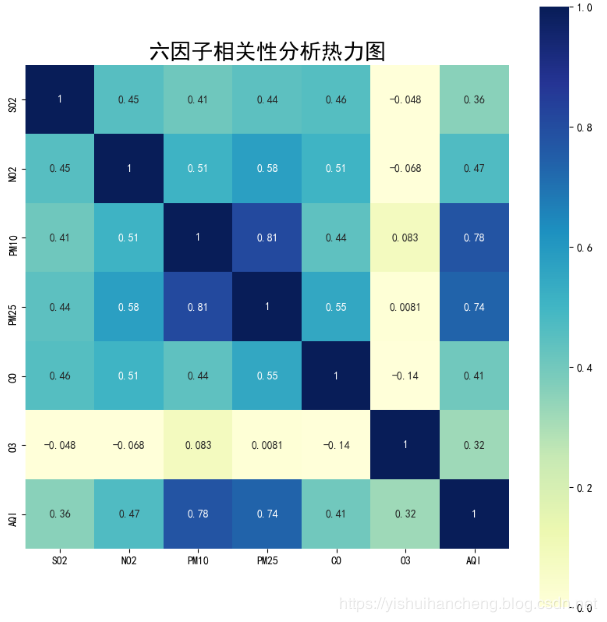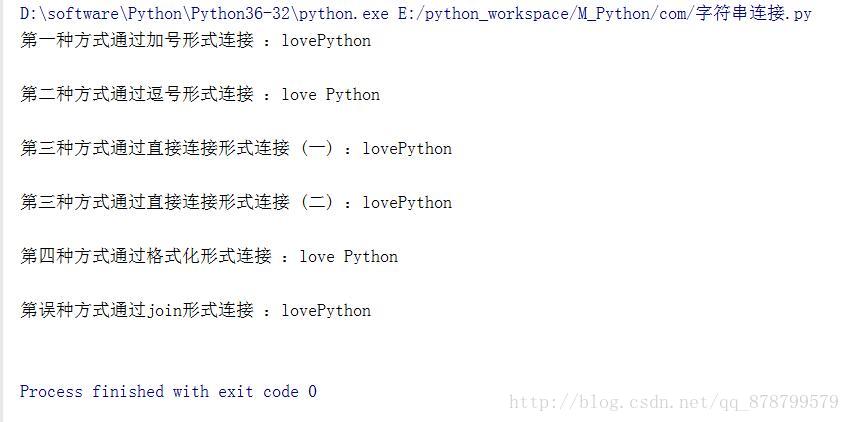pytorch实现用CNN和LSTM对文本进行分类方式
model.py:
#!/usr/bin/python
# -*- coding: utf-8 -*-
import torch
from torch import nn
import numpy as np
from torch.autograd import Variable
import torch.nn.functional as F
class TextRNN(nn.Module):
"""文本分类,RNN模型"""
def __init__(self):
super(TextRNN, self).__init__()
# 三个待输入的数据
self.embedding = nn.Embedding(5000, 64) # 进行词嵌入
# self.rnn = nn.LSTM(input_size=64, hidden_size=128, num_layers=2, bidirectional=True)
self.rnn = nn.GRU(input_size=64, hidden_size=128, num_layers=2, bidirectional=True)
self.f1 = nn.Sequential(nn.Linear(256,128),
nn.Dropout(0.8),
nn.ReLU())
self.f2 = nn.Sequential(nn.Linear(128,10),
nn.Softmax())
def forward(self, x):
x = self.embedding(x)
x,_ = self.rnn(x)
x = F.dropout(x,p=0.8)
x = self.f1(x[:,-1,:])
return self.f2(x)
class TextCNN(nn.Module):
def __init__(self):
super(TextCNN, self).__init__()
self.embedding = nn.Embedding(5000,64)
self.conv = nn.Conv1d(64,256,5)
self.f1 = nn.Sequential(nn.Linear(256*596, 128),
nn.ReLU())
self.f2 = nn.Sequential(nn.Linear(128, 10),
nn.Softmax())
def forward(self, x):
x = self.embedding(x)
x = x.detach().numpy()
x = np.transpose(x,[0,2,1])
x = torch.Tensor(x)
x = Variable(x)
x = self.conv(x)
x = x.view(-1,256*596)
x = self.f1(x)
return self.f2(x)
train.py:
# coding: utf-8
from __future__ import print_function
import torch
from torch import nn
from torch import optim
from torch.autograd import Variable
import os
import numpy as np
from model import TextRNN,TextCNN
from cnews_loader import read_vocab, read_category, batch_iter, process_file, build_vocab
base_dir = 'cnews'
train_dir = os.path.join(base_dir, 'cnews.train.txt')
test_dir = os.path.join(base_dir, 'cnews.test.txt')
val_dir = os.path.join(base_dir, 'cnews.val.txt')
vocab_dir = os.path.join(base_dir, 'cnews.vocab.txt')
def train():
x_train, y_train = process_file(train_dir, word_to_id, cat_to_id,600)#获取训练数据每个字的id和对应标签的oe-hot形式
x_val, y_val = process_file(val_dir, word_to_id, cat_to_id,600)
#使用LSTM或者CNN
model = TextRNN()
# model = TextCNN()
#选择损失函数
Loss = nn.MultiLabelSoftMarginLoss()
# Loss = nn.BCELoss()
# Loss = nn.MSELoss()
optimizer = optim.Adam(model.parameters(),lr=0.001)
best_val_acc = 0
for epoch in range(1000):
batch_train = batch_iter(x_train, y_train,100)
for x_batch, y_batch in batch_train:
x = np.array(x_batch)
y = np.array(y_batch)
x = torch.LongTensor(x)
y = torch.Tensor(y)
# y = torch.LongTensor(y)
x = Variable(x)
y = Variable(y)
out = model(x)
loss = Loss(out,y)
optimizer.zero_grad()
loss.backward()
optimizer.step()
accracy = np.mean((torch.argmax(out,1)==torch.argmax(y,1)).numpy())
#对模型进行验证
if (epoch+1)%20 == 0:
batch_val = batch_iter(x_val, y_val, 100)
for x_batch, y_batch in batch_train:
x = np.array(x_batch)
y = np.array(y_batch)
x = torch.LongTensor(x)
y = torch.Tensor(y)
# y = torch.LongTensor(y)
x = Variable(x)
y = Variable(y)
out = model(x)
loss = Loss(out, y)
optimizer.zero_grad()
loss.backward()
optimizer.step()
accracy = np.mean((torch.argmax(out, 1) == torch.argmax(y, 1)).numpy())
if accracy > best_val_acc:
torch.save(model.state_dict(),'model_params.pkl')
best_val_acc = accracy
print(accracy)
if __name__ == '__main__':
#获取文本的类别及其对应id的字典
categories, cat_to_id = read_category()
#获取训练文本中所有出现过的字及其所对应的id
words, word_to_id = read_vocab(vocab_dir)
#获取字数
vocab_size = len(words)
train()
test.py:
# coding: utf-8
from __future__ import print_function
import os
import tensorflow.contrib.keras as kr
import torch
from torch import nn
from cnews_loader import read_category, read_vocab
from model import TextRNN
from torch.autograd import Variable
import numpy as np
try:
bool(type(unicode))
except NameError:
unicode = str
base_dir = 'cnews'
vocab_dir = os.path.join(base_dir, 'cnews.vocab.txt')
class TextCNN(nn.Module):
def __init__(self):
super(TextCNN, self).__init__()
self.embedding = nn.Embedding(5000,64)
self.conv = nn.Conv1d(64,256,5)
self.f1 = nn.Sequential(nn.Linear(152576, 128),
nn.ReLU())
self.f2 = nn.Sequential(nn.Linear(128, 10),
nn.Softmax())
def forward(self, x):
x = self.embedding(x)
x = x.detach().numpy()
x = np.transpose(x,[0,2,1])
x = torch.Tensor(x)
x = Variable(x)
x = self.conv(x)
x = x.view(-1,152576)
x = self.f1(x)
return self.f2(x)
class CnnModel:
def __init__(self):
self.categories, self.cat_to_id = read_category()
self.words, self.word_to_id = read_vocab(vocab_dir)
self.model = TextCNN()
self.model.load_state_dict(torch.load('model_params.pkl'))
def predict(self, message):
# 支持不论在python2还是python3下训练的模型都可以在2或者3的环境下运行
content = unicode(message)
data = [self.word_to_id[x] for x in content if x in self.word_to_id]
data = kr.preprocessing.sequence.pad_sequences([data],600)
data = torch.LongTensor(data)
y_pred_cls = self.model(data)
class_index = torch.argmax(y_pred_cls[0]).item()
return self.categories[class_index]
class RnnModel:
def __init__(self):
self.categories, self.cat_to_id = read_category()
self.words, self.word_to_id = read_vocab(vocab_dir)
self.model = TextRNN()
self.model.load_state_dict(torch.load('model_rnn_params.pkl'))
def predict(self, message):
# 支持不论在python2还是python3下训练的模型都可以在2或者3的环境下运行
content = unicode(message)
data = [self.word_to_id[x] for x in content if x in self.word_to_id]
data = kr.preprocessing.sequence.pad_sequences([data], 600)
data = torch.LongTensor(data)
y_pred_cls = self.model(data)
class_index = torch.argmax(y_pred_cls[0]).item()
return self.categories[class_index]
if __name__ == '__main__':
model = CnnModel()
# model = RnnModel()
test_demo = ['湖人助教力助科比恢复手感 他也是阿泰的精神导师新浪体育讯记者戴高乐报道 上赛季,科比的右手食指遭遇重创,他的投篮手感也因此大受影响。不过很快科比就调整了自己的投篮手型,并通过这一方式让自己的投篮命中率回升。而在这科比背后,有一位特别助教对科比帮助很大,他就是查克·珀森。珀森上赛季担任湖人的特别助教,除了帮助科比调整投篮手型之外,他的另一个重要任务就是担任阿泰的精神导师。来到湖人队之后,阿泰收敛起了暴躁的脾气,成为湖人夺冠路上不可或缺的一员,珀森的“心灵按摩”功不可没。经历了上赛季的成功之后,珀森本赛季被“升职”成为湖人队的全职助教,每场比赛,他都会坐在球场边,帮助禅师杰克逊一起指挥湖人球员在场上拼杀。对于珀森的工作,禅师非常欣赏,“查克非常善于分析问题,”菲尔·杰克逊说,“他总是在寻找问题的答案,同时也在找造成这一问题的原因,这是我们都非常乐于看到的。我会在平时把防守中出现的一些问题交给他,然后他会通过组织球员练习找到解决的办法。他在球员时代曾是一名很好的外线投手,不过现在他与内线球员的配合也相当不错。',
'弗老大被裁美国媒体看热闹“特权”在中国像蠢蛋弗老大要走了。虽然他只在首钢男篮效力了13天,而且表现毫无亮点,大大地让球迷和俱乐部失望了,但就像中国人常说的“好聚好散”,队友还是友好地与他告别,俱乐部与他和平分手,球迷还请他留下了在北京的最后一次签名。相比之下,弗老大的同胞美国人却没那么“宽容”。他们嘲讽这位NBA前巨星的英雄迟暮,批评他在CBA的业余表现,还惊讶于中国人的“大方”。今天,北京首钢俱乐部将与弗朗西斯继续商讨解约一事。从昨日的进展来看,双方可以做到“买卖不成人意在”,但回到美国后,恐怕等待弗朗西斯的就没有这么轻松的环境了。进展@北京昨日与队友告别 最后一次为球迷签名弗朗西斯在13天里为首钢队打了4场比赛,3场的得分为0,只有一场得了2分。昨天是他来到北京的第14天,虽然他与首钢还未正式解约,但双方都明白“缘分已尽”。下午,弗朗西斯来到首钢俱乐部与队友们告别。弗朗西斯走到队友身边,依次与他们握手拥抱。“你们都对我很好,安排的条件也很好,我很喜欢这支球队,想融入你们,但我现在真的很不适应。希望你们']
for i in test_demo:
print(i,":",model.predict(i))
cnews_loader.py:
# coding: utf-8
import sys
from collections import Counter
import numpy as np
import tensorflow.contrib.keras as kr
if sys.version_info[0] > 2:
is_py3 = True
else:
reload(sys)
sys.setdefaultencoding("utf-8")
is_py3 = False
def native_word(word, encoding='utf-8'):
"""如果在python2下面使用python3训练的模型,可考虑调用此函数转化一下字符编码"""
if not is_py3:
return word.encode(encoding)
else:
return word
def native_content(content):
if not is_py3:
return content.decode('utf-8')
else:
return content
def open_file(filename, mode='r'):
"""
常用文件操作,可在python2和python3间切换.
mode: 'r' or 'w' for read or write
"""
if is_py3:
return open(filename, mode, encoding='utf-8', errors='ignore')
else:
return open(filename, mode)
def read_file(filename):
"""读取文件数据"""
contents, labels = [], []
with open_file(filename) as f:
for line in f:
try:
label, content = line.strip().split('\t')
if content:
contents.append(list(native_content(content)))
labels.append(native_content(label))
except:
pass
return contents, labels
def build_vocab(train_dir, vocab_dir, vocab_size=5000):
"""根据训练集构建词汇表,存储"""
data_train, _ = read_file(train_dir)
all_data = []
for content in data_train:
all_data.extend(content)
counter = Counter(all_data)
count_pairs = counter.most_common(vocab_size - 1)
words, _ = list(zip(*count_pairs))
# 添加一个 <PAD> 来将所有文本pad为同一长度
words = ['<PAD>'] + list(words)
open_file(vocab_dir, mode='w').write('\n'.join(words) + '\n')
def read_vocab(vocab_dir):
"""读取词汇表"""
# words = open_file(vocab_dir).read().strip().split('\n')
with open_file(vocab_dir) as fp:
# 如果是py2 则每个值都转化为unicode
words = [native_content(_.strip()) for _ in fp.readlines()]
word_to_id = dict(zip(words, range(len(words))))
return words, word_to_id
def read_category():
"""读取分类目录,固定"""
categories = ['体育', '财经', '房产', '家居', '教育', '科技', '时尚', '时政', '游戏', '娱乐']
categories = [native_content(x) for x in categories]
cat_to_id = dict(zip(categories, range(len(categories))))
return categories, cat_to_id
def to_words(content, words):
"""将id表示的内容转换为文字"""
return ''.join(words[x] for x in content)
def process_file(filename, word_to_id, cat_to_id, max_length=600):
"""将文件转换为id表示"""
contents, labels = read_file(filename)#读取训练数据的每一句话及其所对应的类别
data_id, label_id = [], []
for i in range(len(contents)):
data_id.append([word_to_id[x] for x in contents[i] if x in word_to_id])#将每句话id化
label_id.append(cat_to_id[labels[i]])#每句话对应的类别的id
#
# # 使用keras提供的pad_sequences来将文本pad为固定长度
x_pad = kr.preprocessing.sequence.pad_sequences(data_id, max_length)
y_pad = kr.utils.to_categorical(label_id, num_classes=len(cat_to_id)) # 将标签转换为one-hot表示
#
return x_pad, y_pad
def batch_iter(x, y, batch_size=64):
"""生成批次数据"""
data_len = len(x)
num_batch = int((data_len - 1) / batch_size) + 1
indices = np.random.permutation(np.arange(data_len))
x_shuffle = x[indices]
y_shuffle = y[indices]
for i in range(num_batch):
start_id = i * batch_size
end_id = min((i + 1) * batch_size, data_len)
yield x_shuffle[start_id:end_id], y_shuffle[start_id:end_id]
以上这篇pytorch实现用CNN和LSTM对文本进行分类方式就是小编分享给大家的全部内容了,希望能给大家一个参考,也希望大家多多支持【听图阁-专注于Python设计】。


